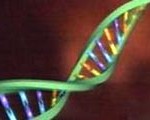Lady Gaga Found This First: ‘Fat’ Poem
In case anyone thought that yesterday’s post on me venturing into theatre was the first sign of me going ‘gaga’, today’s post takes it even further.The following (e-mail readers will have to head to the site to see this) is a short poem called “Fat” by Caroline Rothsteiin, a 29-year old spoken-word poet and writer who lives in New York.
This raw and personal poem, in which Rothstein describes her struggles with her bulimia and body-image issues, was ‘discovered’ by Lady Gaga and has since received over 30,000 hits on YouTube.
As anyone moved by this piece will appreciate, the power of art (in this case a poem) to change heads and hearts is far greater than any scientific study that I could ever hope to publish.
Please feel free to repost this video so that others can see it – appreciate your comments.
AMS
Edmonton, Alberta
All Obese Patients Should Be Screened For ADHD
 Regular readers will recall previous posts on the association between attention deficit disorder (ADD) and obesity.
Regular readers will recall previous posts on the association between attention deficit disorder (ADD) and obesity.
As this condition significantly affects impulse control, ability to plan, perseverance, time management, and many other factors and skills essential for weight management, this relationship should be no surprise.
In our own clinical experience (as suggested in several recent publications from others), managing ADD can often be the key step to managing weight gain.
Once you start systematically screening patients for ADD in an obesity clinic, it seems to be present in a surprisingly large number – almost 20-30%.
This number is consistent with the findings of another study, this time by Bruno Palazzo Nazar and colleagues from the Federal University of Rio de Janeiro, Brazil, published in the Journal of Attention Disorders.
The study sample consisted of women seeking nonsurgical treatment of obesity at a public endocrinology hospital with an eating disorders and obesity clinic, in Rio de Janeiro.
One hundred and fify-five consecutive patients presenting in the clinic were approached for this study. Exclusion criteria included less than 5 years of schooling/inability to read and fill out forms and questionnaires; current alcohol or drug abuse, history of bipolar or psychotic disorder; current treatment with psychoactive drugs; and presence of uncontrolled clinical, neurological, or endocrine disorders, especially if they interfere with weight, appetite, and attention; and patients older than 60 years.
Based on a battery of validated questionnaires and semi-structured interviews, 28.3% of patients were diagnosed with ADD, which, in turn, was significantly correlated with more severe binge eating, bulimic behaviors, and depressive symptoms.
As the authors note, this rate of almost 30% is far higher than the expected rate of less than 5% in the general population.
In fact, given the rather rigorous exclusion criteria, the actual prevalence of ADHD in this patient set may actually be even higher.
As a clinician, I’d certainly support the notion that we should be aware of the high prevalence of ADHD in patients presenting in obesity programs. Making this diagnosis and managing this issue, may make all the difference in long-term outcomes.
AMS
Cambridge, UK
photo credit: Peter Vidrine via photo pin cc
![]() Nazar BP, Pinna CM, Suwwan R, Duchesne M, Freitas SR, Sergeant J, & Mattos P (2012). ADHD Rate in Obese Women With Binge Eating and Bulimic Behaviors From a Weight-Loss Clinic. Journal of attention disorders PMID: 22930790
Nazar BP, Pinna CM, Suwwan R, Duchesne M, Freitas SR, Sergeant J, & Mattos P (2012). ADHD Rate in Obese Women With Binge Eating and Bulimic Behaviors From a Weight-Loss Clinic. Journal of attention disorders PMID: 22930790
.
ISORAM Day 2: Eating With Your Brain, Taste Alterations, Glucose Transport, and Dietary Fibre
 Day 2 of the 2nd International School on Obesity Research and Management (ISORAM) was kicked off by Bill Colmers (Edmonton), who provided a succinct review of the neurohormonal regulation of energy homeostasis and its importance for survival. While there was no evolutionary pressure to not exceed the minimum needs, biology favoured the ability to opportunistically store excess energy and defend body weight. While the former is the job of the hedonic system (thus, promoting weight gain), the latter is the job of the homeostatic system (thus, promoting weight regain).
Day 2 of the 2nd International School on Obesity Research and Management (ISORAM) was kicked off by Bill Colmers (Edmonton), who provided a succinct review of the neurohormonal regulation of energy homeostasis and its importance for survival. While there was no evolutionary pressure to not exceed the minimum needs, biology favoured the ability to opportunistically store excess energy and defend body weight. While the former is the job of the hedonic system (thus, promoting weight gain), the latter is the job of the homeostatic system (thus, promoting weight regain).
Andres Thalheimer (Wuerzburg, Germany) discusses how olfactory sense and taste may change following bariatric surgery. While anecdotally, patients undergoing surgery often report changes in appetite and response to food stimuli, whether or not these changes are accompanied by changes in gustation or olfaction are less clear. In their own studies, they found a slightly lower olfaction threshold in patients following sleeve gastrectomy but not following Roux-en-Y gastric bypass. However, these preliminary data are far from conclusive and there is a need for significantly more work in this area.
Christian Jurowich (Wuerzburg) presented novel findings on changes in intestinal glucose transport in animal models of bariatric surgery in diabetic rodents. His work focussed on the Na+-D-glucose Cotransporter SGLT1, a pivotal mechanism for intestinal glucose absorption and glucose-dependent incretin secretion and shows how adaptation of this transporter may affect glucose transport and incretin secretion post surgery.
Michael Lyon (Vancouver) reviewed the many biological functions of dietary fibre on a wide range of health conditions ranging from ischemic heart disease, stroke atherosclerosis, type 2 diabetes, overweight and obesity, insulin resistance, hypertension, dyslipidemia, as well as gastrointestinal disorders such as diverticulosis, irritable bowel disease, colon cancer, and cholelithiasis. The physiological effects of fiber relate to the physical properties of volume, viscosity and water holding capacity that the fiber imparts to food leading to important influences over the energy density of food. Beyond these physical properties, fiber directly impacts a complex array of microbiological, biochemical and neurohormonal effects directly through modification of the kinetics of digestion and through its metabolism into constituents such as short chain fatty acids which are both energy substrates and important enteroendocrine ligands. Of particular interest to clinicians is the important role dietary fiber plays in glucoregulation, appetite, and satiety.
Other talks on day 2 of ISORAM included a session on the psychosocial aspects of bariatric care, including a talk by Birgit Wagner (Leipzig) on the complex issue of suicidality, depression, and anxiety disorder particularly in adolescents with severe obesity, a discussion of the many psychological and social issues relevant to the management of childhood obesity and family interventions, and a talk by Almut Rudolph (Lepizig) on the need for pre and post-surgical psychosocial support and interventions in patients undergoing bariatric surgery.
Another talk deserving special mention was a presentation by Tina Ullrich (Edmonton/Leipzig) on some of the mechanisms involved in the development of endothelial dysfunction in childhood obesity – a topic of interest given the early impact that obesity can have on cardiovascular function, thus setting the stage for future complications.
AMS
Lake Louise, Alberta
Taming the Obeast
 A few weeks ago, I read Lori Lansens’ bestselling book “the wife’s tale“.
A few weeks ago, I read Lori Lansens’ bestselling book “the wife’s tale“.
The book tells the story of Mary Gooch, a 43 year-old woman with severe obesity, who lives her life in defensive, deflective blame, segregating herself in the small farming town of Leaford, Ontario.
When her husband dissapears on the eve of their 25th wedding anniversary, Mary abandons her comfortable position to take the next flight to look for him in California. Soon after arriving she loses her wallet and passport, which further complicates her situation.
With the help of some unlikely friendships that she makes along the way, Mary undertakes a journey of self discovery resulting in an amazing transformation. The deeply insightful story touchingly depicts the heart-wrenching daily reality of someone living with severe disabling obesity.
In an opening sequence, Mary describes how, as a nine year old, she heard her doctor whisper the word “obese” to her mother. Never having heard the word before, little Mary imagined that she was under the power of an “obeast”, a creature that had taken over her body and was manifesting itself in her starving gut.
As Lori Lansens, who hails from Chatham, Ontario, a rural community near the border to Detroit, notes in her self-penned author profile,
“I drove the curving roads of the Santa Monica Mountains thinking of the thousands of conversations I’ve had with women about loneliness, self acceptance, marriage, husbands, body image, food, denial, betrayal and more recently, encroaching middle-age. I thought about what it means to be a stranger, and how one can be transformed by circumstance, and as I found my own tribe of friends and settled into the new rhythm of a different life, the story of Mary Gooch unfolded.”
Although her biography makes no mention of any weight issues that Lansens herself may have experienced, she tells the story of many patients that I see in my clinic everyday.
Anyone who still believes that we will solve the obesity epidemic by simply telling people to eat less and move more should take the time to read this book – but my guess is that if you believe that the solution to obesity is as simple as eating less, then you may have little interest in a book which reveals uncomfortable layers of complexity to a problem for which there are no easy solutions.
If any of my readers have read “The Wife’s Tale”, I’d love to hear from you.
AMS
Edmonton, Alberta
Cortisol Receptor Gene Linked to Binge Eating Disorder
 Anyone who has ever taken high doses of cortisone is well aware of the profound effect of glucocorticoids on appearance and body weight.
Anyone who has ever taken high doses of cortisone is well aware of the profound effect of glucocorticoids on appearance and body weight.
Not only do patients on high doses of cortisone regularly develop a typical Cushingoid phenotype (with abdominal obesity, moon face and buffalo hump) but patients also develop a ravenous hunger and appetite with an often dramatic increase in food intake.
Given this impact of the glucocorticoid system on ingestive behaviour, it may be reasonable to ask whether genetic differences in this system can perhaps also play a role in eating disorders?
This question was now addressed by Cellini and colleagues from the University of Florence, Italy, in a paper just published online in Psychiatric Genetics.
The authors studied the distribution of various variants of the glucocorticoid receptor gene in 572 Italian patients: 118 patients with anorexia nervosa, 108 patients with bulimia nervosa, 62 patient with binge eating disorder, 177 obese non-binge eating disorder patients, and 107 unrelated, normal, age-matched controls.
While there were no significant relationships between any of the receptor polymorphisms and other eating disorders, there was a significant association between one variant (rs6198) and binge eating disorder.
In addition, irrespective of eating behaviour, individuals with another genetic variant of this receptor (N363S) tended to have higher a BMI.
While it is always wise to treat such findings, especially when they come from a single, relatively small study, with caution, these results are certainly compatible with the notion that the glucocorticoid system (perhaps not unexpectedly) may well play a role in the development of obesity and binge eating disorder (at least in a subset of patients).
Although it is highly unlikely that finding these genetic variants will lead to a genetic diagnostic test anytime soon, people with this problem may find some comfort in the idea that their genetic makeup may well be a factor that determines their susceptibility to this disorder.
Fortunately, binge-eating disorder is highly responsive to treatment, and professional psychological counseling (sometimes in combination with pharmacotherapy) can lead to the resolution of binge-eating behaviours in the vast majority of patients.
AMS
Montreal, Quebec
p.s. Join my new Facebook page for more posts and links on obesity prevention and management
Cellini E, Castellini G, Ricca V, Bagnoli S, Tedde A, Rotella CM, Faravelli C, Sorbi S, & Nacmias B (2010). Glucocorticoid receptor gene polymorphisms in Italian patients with eating disorders and obesity. Psychiatric genetics PMID: 20440229



